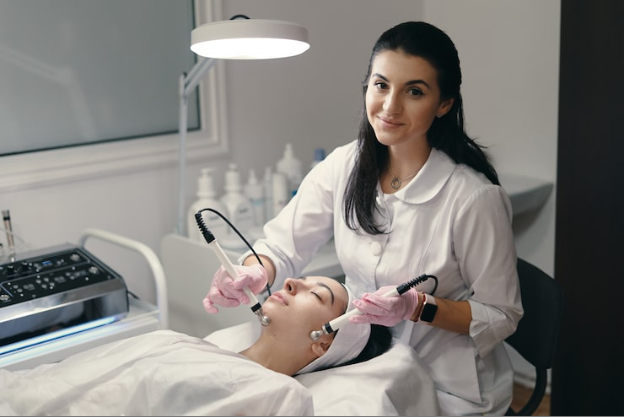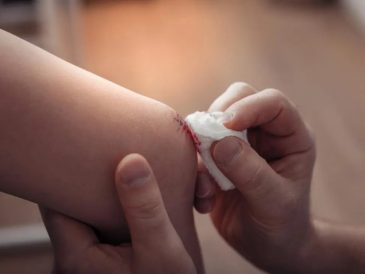Skin rejuvenation continues to evolve with science-backed technologies and innovative techniques leading the way. In 2025, dermatologists are prioritizing effectiveness, safety, and long-term results when recommending treatments for smoother, firmer, and younger-looking skin. Whether you’re targeting fine lines, sun damage, dullness, or loss of elasticity, these top rejuvenating skin treatments have shown exceptional outcomes.
1. Microneedling with Radiofrequency (RF)
Microneedling with RF is one of the most recommended rejuvenating skin treatments today. This technique combines tiny needle punctures with radiofrequency energy to stimulate collagen and elastin production deep within the dermis. In 2025, advances in RF microneedling devices have reduced discomfort and downtime while improving precision.
This treatment is ideal for reducing fine lines, acne scars, enlarged pores, and overall skin laxity. It’s commonly used on the face, neck, and even delicate areas like under the eyes. Patients typically need 3–5 sessions spaced a month apart to see significant results.
2. Laser Resurfacing (Fractional CO2 and Er:YAG)
Laser resurfacing remains a cornerstone in rejuvenating skin treatment. Fractional CO2 lasers and Er:YAG lasers target the skin’s surface to remove damaged layers, improve tone, and stimulate collagen renewal. Dermatologists in 2025 prefer fractional lasers due to their ability to treat skin more evenly with less downtime compared to fully ablative lasers.
Fractional CO2 is excellent for deeper wrinkles and acne scars, while Er:YAG is often used for more superficial concerns like pigmentation or sun damage. Most patients require 1–3 treatments, with visible improvement seen after the first session.
3. Platelet-Rich Plasma (PRP) Therapy
Popularly known as the “vampire facial,” PRP therapy continues to be a dermatologist favorite for its natural regenerative properties. PRP is derived from the patient’s own blood, processed to concentrate platelets, and then injected or applied topically during microneedling.
PRP is rich in growth factors that promote tissue repair, improve skin texture, and enhance elasticity. In 2025, many dermatologists combine PRP with other treatments like microneedling or laser to boost efficacy. The risk of adverse reactions is minimal since the treatment uses the patient’s own biological material.
4. Chemical Peels (Medium and Deep Strength)
Chemical peels have evolved into more customizable and precise options. Medium and deep-strength peels using trichloroacetic acid (TCA) or phenol are highly effective for treating melasma, sunspots, wrinkles, and uneven skin tone.
In 2025, dermatologists are increasingly favoring controlled peels with predictable penetration levels, leading to safer outcomes. These peels work by exfoliating the outermost layers of the skin and stimulating new skin growth. Although deeper peels require downtime, they offer longer-lasting rejuvenating effects compared to superficial peels.
5. Injectable Biostimulators (Sculptra and Radiesse)
Injectable biostimulators like poly-L-lactic acid (Sculptra) and calcium hydroxylapatite (Radiesse) have become mainstream in non-surgical skin rejuvenation. Rather than just filling lines, these injectables encourage the body to produce collagen over time, improving skin texture and firmness.
In 2025, dermatologists use biostimulators for full-face rejuvenation, focusing on areas like the cheeks, jawline, and temples. Treatments are spaced over several months and can last up to two years. The gradual nature of the results makes it a subtle but powerful rejuvenating skin treatment.
6. LED Light Therapy (Red and Near-Infrared)
LED light therapy has become more advanced and accessible in recent years. Red and near-infrared wavelengths penetrate the skin to reduce inflammation, boost circulation, and stimulate fibroblast activity.
This treatment is non-invasive, painless, and requires zero downtime, making it a preferred option for maintenance or post-procedure recovery. Dermatologists often combine LED light therapy with other treatments like microneedling, peels, or facials to enhance healing and skin regeneration.
In 2025, home LED devices have improved in efficacy, but in-office sessions still deliver superior results due to higher energy output and precision.
7. Ultrasound Skin Tightening (Ultherapy and Sofwave)
Ultrasound-based treatments like Ultherapy and the newer Sofwave technology use focused ultrasound waves to heat the skin’s deeper layers, tightening and lifting sagging tissue.
These devices are FDA-cleared and remain among the top choices for non-invasive lifting of the brow, jawline, and neck. Sofwave, in particular, offers faster treatments with less discomfort and no downtime. Results continue to improve over several months as new collagen forms, making this a reliable long-term rejuvenating skin treatment.
Conclusion
The field of dermatology in 2025 is offering patients more effective and safer options than ever before for skin rejuvenation. From collagen-stimulating injectables to cutting-edge energy-based treatments, each option provides unique benefits depending on the individual’s skin type, age, and desired results. Ultimately, these treatments not only refresh your appearance but also promote lasting skin health—making them a vital part of any aesthetic treatment strategy. If you’re considering a rejuvenating skin treatment, consult a board-certified dermatologist to develop a plan tailored to your skin goals.





